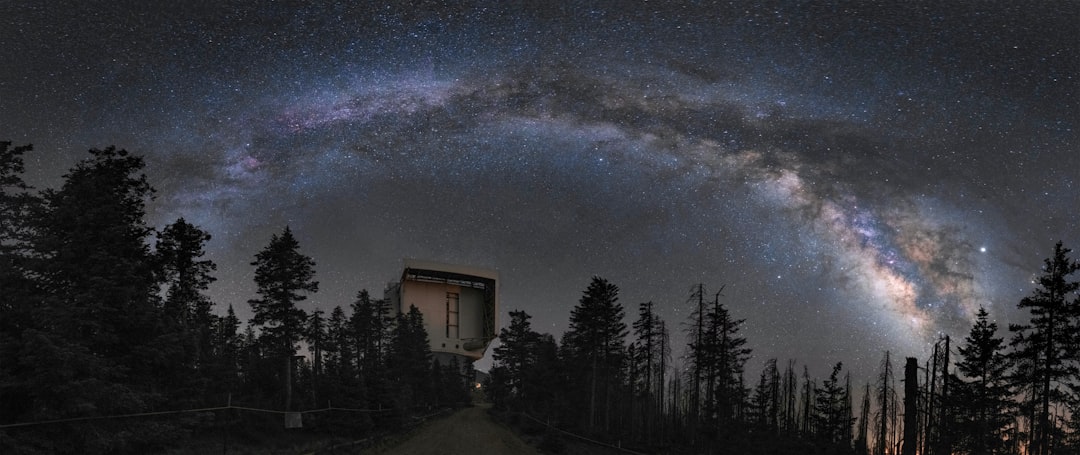A Night Sky That Steals the Show (Image Credits: Unsplash)
Under a velvet black sky pierced by countless shimmering lights, the vast river of stars known as the Milky Way stretches endlessly, casting an ethereal glow that feels almost within reach.
A Night Sky That Steals the Show
Imagine standing in the crisp mountain air, where the silence is broken only by the whisper of wind, and suddenly the entire galaxy unfolds above you like a living tapestry. That’s the magic captured in this recent snapshot from the Vera C. Rubin Observatory. It’s not just a pretty picture; it’s a reminder of how our little blue planet fits into something infinitely larger.
The observatory, perched high in the Chilean Andes, sits in one of the darkest spots on Earth, perfect for stargazing. On clear nights like this one in late October, the Milky Way dominates, its dense core glowing with the light of billions of stars. This view isn’t filtered or enhanced – it’s pure, unadulterated wonder straight from the heavens.
What makes this scene so captivating is the contrast between the ancient cosmos and the modern tech below. The observatory’s sleek dome stands sentinel, ready to unlock even more secrets of the universe.
Spotlight on the Vera C. Rubin Observatory
This isn’t your average telescope setup; the Vera C. Rubin is a game-changer in astronomy. Named after the pioneering astrophysicist Vera Rubin, who revolutionized our understanding of dark matter, the facility boasts an 8.4-meter mirror and a massive 3.2-gigapixel camera. It’s designed to survey the entire southern sky every few nights over the next decade.
Since its first images dropped back in June, excitement has been building. The observatory will map everything from nearby asteroids to distant galaxies, potentially spotting thousands of new supernovae each year. For now, though, it’s the backdrop to this stellar display that has everyone talking.
Located on Cerro Pachón in Chile, the site benefits from minimal light pollution, making nights like this one ideal for both observation and inspiration.
Why the Milky Way Captivates Us All
Our galaxy isn’t just a backdrop – it’s home to over 100 billion stars, including our own sun, tucked away in one of its spiral arms. Viewing it like this, edge-on from Earth, reveals the heart of the Milky Way, a bulge packed with stellar nurseries and black holes. It’s a humbling sight that has inspired poets, scientists, and dreamers for millennia.
In this photo, the Milky Way arcs gracefully, with hints of nebulae adding pops of color to the starry band. Dark lanes of cosmic dust weave through, like veins in a glowing leaf, hinting at the complex birth and death of stars happening right now.
- The core appears brightest in summer and fall from the Southern Hemisphere.
- It spans about 100,000 light-years across, yet we see only a slice from our vantage point.
- Ancient cultures saw it as a pathway to the afterlife; today, it’s a target for exploration.
- With observatories like Rubin, we’ll soon know its structure in unprecedented detail.
- Fun fact: If you could see infrared light, it would look even more vibrant with hidden stars.
Chile’s Role in Unlocking Cosmic Mysteries
Chile – this southern nation has become a hub for world-class astronomy, thanks to its clear skies and remote mountains. Places like Cerro Pachón host multiple observatories, including the twin Gemini telescopes and the upcoming Extremely Large Telescope. The Vera C. Rubin fits right in, boosting Chile’s status as a stargazing powerhouse.
The dry Atacama Desert nearby ensures stable seeing conditions, meaning sharper images with less atmospheric distortion. For the Milky Way photo, that translated to crisp details that reveal faint stars invisible to the naked eye from polluted cities.
Local communities play a key role too, balancing scientific progress with cultural preservation. It’s a partnership that enriches both the science and the stories told under these skies.
Tech Meets the Timeless Sky
The Rubin’s Legacy Survey of Space and Time will generate an astonishing 20 terabytes of data nightly, painting a dynamic picture of the universe’s evolution. This Milky Way image, taken during a quiet moment, showcases why such tech matters – it bridges the gap between everyday wonder and deep discovery.
Engineers designed the camera to capture wide fields quickly, ideal for transient events like asteroid passes or gamma-ray bursts. Yet, on off-nights, the site itself becomes the star, as seen here with the galaxy’s glow reflecting off the observatory’s surface.
| Feature | Vera C. Rubin | Traditional Telescopes |
|---|---|---|
| Mirror Size | 8.4 meters | Typically 2-4 meters |
| Camera Pixels | 3.2 gigapixels | Up to 1 megapixel |
| Survey Speed | Entire sky every few nights | Targeted observations |
This setup allows for breakthroughs that smaller scopes can’t match, like detecting dark energy’s effects on galaxy clusters.
Key Takeaways from This Celestial Snapshot
- The Vera C. Rubin Observatory combines cutting-edge tech with one of Earth’s best viewing spots for unmatched cosmic insights.
- The Milky Way’s appearance here highlights the galaxy’s scale and beauty, fueling ongoing astronomical quests.
- Images like this inspire the next generation to look up and explore the universe’s hidden stories.
As we gaze at this mesmerizing blend of nature and innovation, it’s clear that the night sky still holds endless surprises. What secrets will the Rubin uncover next? Share your thoughts or favorite stargazing spots in the comments below.






